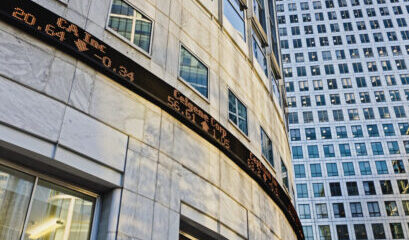Private credit borrowers debate when it’s time to clean up in bankruptcy
In the secretive world of direct lenders and financial sponsors, distressed portfolio companies are typically restructured out of the public eye. In some cases, though, companies have no choice but to file for bankruptcy to fix broken capital structures and eliminate other liabilities.
Advisors say the decision can come down to weighing the higher cost and publicity of a Chapter 11 case versus the unique benefits bankruptcy can provide.
“An in-court bankruptcy makes a lot of sense for a company stuck with non-funded debt liabilities the payment of which is not accretive to its long-term business plan, like real estate leases in underperforming locations or significant litigation exposure,” said Michael Handler, a partner in King & Spalding’s finance and restructuring practice.
In recent private credit restructurings, Zips Car Wash filed for Chapter 11 bankruptcy, while online learning platform Pluralsight and insurance claims processor Alacrity Solutions struck out of court deals to hand the keys to lenders.
More deals may be on the horizon even as the vast majority of companies with private credit are doing fine.
Credit ratings provider KBRA warned in a recent report that around 5% of the 1,903 sponsor-backed, middle market, corporate borrowers that the agency analyzed were struggling. Around 80% of these at-risk firms have already been granted some relief by lenders.
Many borrowers that have private credit debt are still working through amend and extend transactions that were initially done in 2020 and 2021, according to Tuck Hardie, managing director at Houlihan Lokey’s financial restructuring group. “Rates haven’t come down nearly as fast as people needed. Inflation continues to chip away at profitability, and as a result, a lot of the balance sheets that were put in place in 2020 and 2021 still don’t work,” Hardie said.
Still, Hardie said that he expects most private credit restructurings will be handled through a negotiated liability management exercise or A&E deal, which offers more certainty and minimizes friction costs and disruption to the business.
There is always the chance that lenders themselves can be at loggerheads, creating fresh bumps in the road to a restructuring. In these circumstances, taking the process in-court could paper over these differences since bankruptcy reduces the consent threshold to two-thirds in value and a majority in number to bind all parties, said Ari Lefkovits, managing partner of Delos Capital.
“If parties ‘aren’t playing nicely in the sandbox,’” the counterparties may also favor the in-court option as a federal judge would oversee a case and guard against destruction of value,” said Lefkovits.
Handler said the decision to file for Chapter 11 often is driven more by operational and non-funded debt liabilities than funded debt, noting that unless a company reaches a consensual deal with unsecured creditors it will not be released from liabilities unless it restructures in court.
Retailers and other companies with large exposure to real estate like Zips are prime candidates for a bankruptcy filing.
“An in-court process is more expensive, but it allows a company like Zips to renegotiate leases and certain contracts much more efficiently,” said Judah Gross, a lawyer and senior director at KBRA.
Filings in the case of Zips, one of the largest operators of car washes in the US with over 250 locations, sheds light on the practice.
Zips filed after spending months negotiating with its financial sponsor Atlantic Street Capital, preferred equity holders and a group of direct lenders about how to address the 2024 maturity on Zips’ USD 654m delayed-draw term loan, according to a declaration by Kevin Nystrom, a partner at AlixPartners who is serving as chief transformation officer.
Bankers at Evercore working for Zips, meanwhile, searched in vain to find a third-party investor to refinance the term loan provided by the group of direct lenders that included Brightwood Capital, HPS, PennantPark, Onex and Capital Southwest.
But Zips’ challenges extended beyond an over-levered capital structure that couldn’t be refinanced.
After years of rapid expansion, Zips faced competition from rival chains that were opening hundreds of new locations even as retail traffic slowed, negatively impacting revenue and cash flow. The company was stuck with unprofitable sites and off-market lease obligations it could not easily exit, Nystrom wrote in his declaration.
Zips engaged real estate advisors at Hilco Global to evaluate potential lease savings through an in court versus out of court process and negotiate with landlords.
By early January, liquidity at Zips was tight and lenders were unwilling to provide additional funding out of court, according to the filing. Major shareholders to Zips and 100% of lenders signed onto a restructuring agreement that calls for eliminating USD 279m in funded debt, dropping millions in lease liabilities and handing the keys to the direct lenders through a Chapter 11 bankruptcy.
Zips’ lenders were advised by Paul Hastings, while Evercore and Kirkland & Ellis were retained by the company, Debtwire was first to report late last year.












